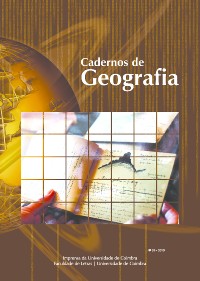Please use this identifier to cite or link to this item:
https://hdl.handle.net/10316.2/46950| Title: | GIS and touristic itineraries: the case of São Cristóvão, Sergipe, Brazil | Other Titles: | SIG e roteiros turísticos: o caso de São Cristóvão, Sergipe, Brasil | Authors: | Santos, Cristiane Alcântara de Jesus Campos, Antonio Carlos Rodrigues, Larissa Prado |
Keywords: | GIS;new technologies;innovation;tourism;itineraries;GIS;new technologies;innovation;tourism;itineraries | Issue Date: | 2019 | Publisher: | Imprensa da Universidade de Coimbra | Abstract: | Os Sistemas de Informação (SI) e a Internet têm transformado as relações entre indivíduos e grupos sociais
e, consequentemente, associado novas dimensões às práticas turísticas. Diante disso, destacamos as possibilidades
de uso do SIG/WebGIS por planejadores, gestores da atividade turística e pelos usuários finais dos produtos
turísticos: os turistas. Dessa maneira, este estudo pretende apresentar uma proposta metodológica de
aplicação do Sistema de Informação Geográfica (SIG) para a elaboração de roteiros turísticos com vistas a utilização
pela demanda turística, de modo que estes possam apropriar-se e usar as informações específicas georreferenciadas
antes e durante sua estada no destino. Para desenvolver os roteiros, foi elaborado o inventário turístico
dos principais atrativos locais, assim como a classificação dos bens e serviços do entorno de cada
atrativo. Posteriormente, foram adicionadas fotografias e informações textuais para definir circuitos lineares
que podem ser utilizados como referência de roteiros turísticos para os visitantes. A partir da publicação dos
roteiros e sua utilização ancorada nos exploradores como Google Maps, Open Street Maps ou Waze esperamos
que os procedimentos e técnicas de suporte baseados em SIG sejam executados por diversos destinos turísticos,
em formato de sites interativos e/ ou aplicativos alimentados pelos gestores locais, de forma que possa consolidar
o SIG como ferramenta básica para a tomada de decisões, proporcionando um maior domínio das noções
espaciais, expandindo e intensificando as experiências turísticas. The Information Systems (IS) and the Internet have transformed the relations between individuals and social groups. They associated new dimensions to the tourist practices. In this study, the possibilities of use of the GIS/WebGIS by planners and managers of tourist activity, and by the end users of tourist products: tourists were highlighted. This study aims to present a methodological proposal for implementation of Geographic Information System (GIS) for the development of tourist itineraries in accordance with the tourist demand. The tourists can obtain and use specific geographic information before and during their stay at the destination. To develop the itineraries, it was drawn up the inventory of local tourist attractions, as well as the goods and services classification in the surroundings of each attraction. Subsequently, photos and textual information were added to define linear circuits used as a reference for visitor’s tours. With the itineraries publication and their use anchored in explorers (Google Maps, Open Street Maps or Waze), one hopes the procedures and techniques of support based on GIS are executed by tourist destinations, in interactive websites format and/or applications format updated by local managers. And GIS can be consolidated as a basic tool for decision-making, providing a better control of spatial concepts, expanding and intensifying the tourist experiences. |
URI: | https://hdl.handle.net/10316.2/46950 | ISSN: | 0871-1623 2183-4016 (PDF) |
DOI: | 10.14195/0871-1623_39_3 | Rights: | open access |
| Appears in Collections: | Cadernos de Geografia |
Files in This Item:
| File | Description | Size | Format | |
|---|---|---|---|---|
| gis_and_touristic_itineraries.pdf | 4.57 MB | Adobe PDF |  |
Items in DSpace are protected by copyright, with all rights reserved, unless otherwise indicated.
